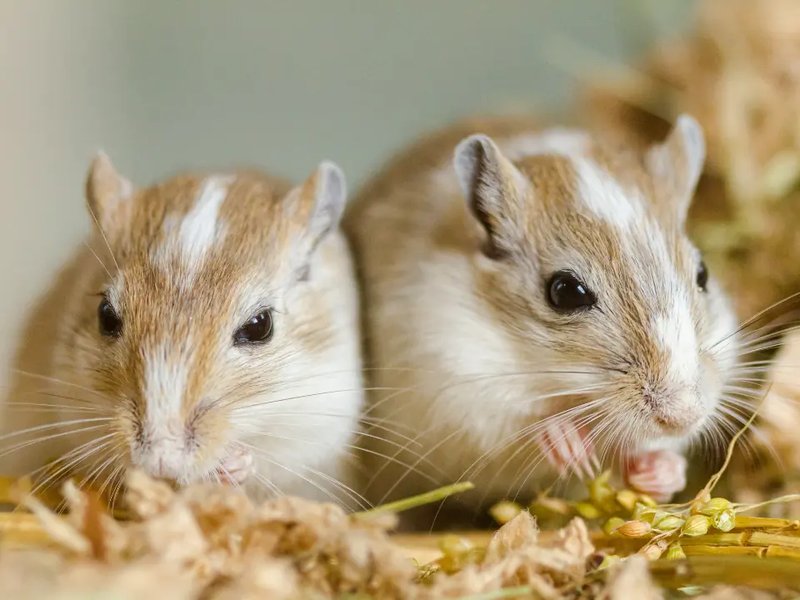
Imagine you’re at a party. Some people enjoy mingling, while others prefer sticking to the sidelines. It’s the same with gerbils! These delightful rodents can be social butterflies or independent explorer types. Understanding their social behavior can help you make the best choice for your future pet. So, grab a cup of coffee, and let’s explore this together.
The Social Nature of Gerbils
Gerbils are naturally social creatures. In the wild, they live in colonies, often forming close bonds with their fellow gerbils. These relationships aren’t just about companionship; they also play a crucial role in their survival. Being part of a group offers protection from predators and allows them to share resources. So, when you bring a gerbil into your home, you’re inviting a little piece of that social world with you.
You might be wondering if all gerbils crave companionship or if some prefer to be lone rangers. Here’s the thing: while many gerbils thrive with a partner, every little furball has its own personality. Some might be more independent, while others display strong social tendencies right from the get-go. Keep an eye on their behavior when making decisions about companionship.
Single vs. Pairing Gerbils
When considering whether to house a single gerbil or pair them up, think about their well-being and happiness. While one gerbil can be perfectly healthy and happy, having a companion can enhance their quality of life. Gerbils that are kept together often engage in more play, grooming, and social interaction. This can lead to a more active and enriched environment.
However, pairing gerbils isn’t always straightforward. Sometimes, introductions can go south, and you might witness a bit of tussling. This is normal behavior as they establish their social hierarchy. If you’re contemplating adopting two gerbils, make sure to monitor their interactions closely and be prepared to separate them if things get too heated.
Choosing the Right Companions
If you’ve decided to adopt two gerbils, it’s key to choose the right partners. The safest pairing is usually same-sex gerbils. This minimizes the chances of unwanted breeding and helps maintain a peaceful living environment. Consider adopting siblings or gerbils from the same litter. They often have a built-in bond, making it easier for them to settle into their new home together.
You might also think about getting a pair from the same pet store or rescue. Besides ensuring that they’re compatible, it’s important they’re both healthy. Look for signs of illness like lethargy or unusual behavior. A good match can lead to a harmonious household where both gerbils thrive!
Making Introductions Smooth
Introducing gerbils is an art, and the first impression can set the tone for their relationship. Start by placing them in neutral territory. This could be a playpen or a separate enclosure free from any territorial markers. If one gerbil has been living alone for a while, they might be more protective of their space, so giving them a neutral ground helps level the playing field.
During the introduction process, observe their body language. If they seem curious and start to sniff each other without aggression, that’s a good sign! However, if you notice aggressive behaviors like biting or excessive digging, it’s best to separate them immediately. Patience is essential here; a successful introduction may take several sessions.
Environmental Considerations
A suitable environment can significantly impact how your gerbils interact. Ensure their habitat is spacious enough for both of them to explore. A big tank or a multi-level cage with tunnels, hideouts, and plenty of bedding will encourage natural behaviors. Gerbils love to dig and burrow, so providing ample substrate is a must.
In addition to space, make sure the living conditions are comfortable. Maintain a consistent temperature and keep their home clean. Stress from a messy environment can lead to territorial disputes. Plus, a clean cage reduces the risk of illness, allowing them to focus on bonding rather than fighting for territory.
Signs of a Happy Pair
So, how do you know if your gerbils are getting along? Happy gerbils will often be seen grooming each other—a sign of affection and bonding. They might cuddle together during sleep or engage in playful behavior, like chasing one another around their enclosure. Sharing food and resources is another good sign, as it indicates trust and companionship.
Conversely, if you notice constant fighting, excessive hiding, or one gerbil clearly dominating the other, it might be time to reassess your situation. While some squabbling is normal, persistent stress or aggression isn’t healthy for either gerbil. In such cases, consider separating them to prevent harm and ensure both remain happy and healthy.
When to Keep Gerbils Alone
While many gerbils enjoy the company of a buddy, some might actually do better alone. If you notice your gerbil is particularly shy or aggressive during introductions, it may be a sign they prefer solitary life. Just like some humans enjoy being alone, so do some gerbils.
Another reason for a solo lifestyle might relate to health issues. If a gerbil has a major health concern, introducing a partner can stress them further. It’s crucial that the focus remains on their well-being. Always prioritize a peaceful environment, and don’t hesitate to consult a vet if you’re uncertain about your gerbil’s social needs.
Final Thoughts on Gerbil Companionship
Deciding whether gerbils need a companion isn’t a one-size-fits-all answer. Many thrive in pairs, while others prefer their own company. Observing their behavior, providing a suitable environment, and making careful introductions can create a healthy, happy home for your furry friends.
In the end, if you’re thinking about getting a gerbil or two, just remember that each little one has its own personality. Being attentive to their needs and adjusting your approach can make all the difference in helping them lead a fulfilling life. Whether solo or paired up, your dedication will keep your gerbil happy, engaged, and loved.

